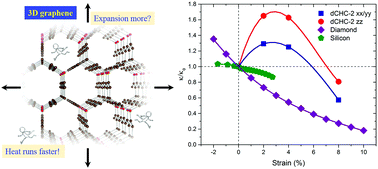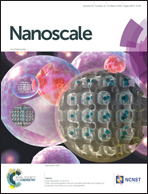Unusual strain response of thermal transport in dimerized three-dimensional graphene
Abstract
Newly synthesized 3D graphene with large porosity and hollow structure holds great potential in many applications. However, there is still controversy over the stable structure of the observed 3D graphene and the relevant physical and chemical properties are still lacking. From first-principles lattice dynamics and ab initio molecular dynamics simulation, we found that the previously proposed model for experimentally synthesized 3D graphene is not stable due to the dangling bonds along the connection junctions. We show that reconstruction of equidistant carbon atoms along the junctions, i.e. dimerization, can make the structure more energetically favorable and thermodynamically stable. More intriguingly, an anomalous non-monotonic response of strain-engineered lattice thermal conductivity is observed for the new 3D graphene structure with the highest thermal conductivity achieved at 3% strain. Upon analyzing individual phonon modes, it is found that the anomalous change is dominated by an overwhelming increase of the phonon relaxation time and the governing physics is unraveled using root mean-square displacement, Grüneisen parameter and local potential well in forming the dimerization of the C–C linkage. The fundamental mechanism would be very beneficial for the relevant applications of 3D graphene, such as thermal management of high power density energy storage.



 Please wait while we load your content...
Please wait while we load your content...